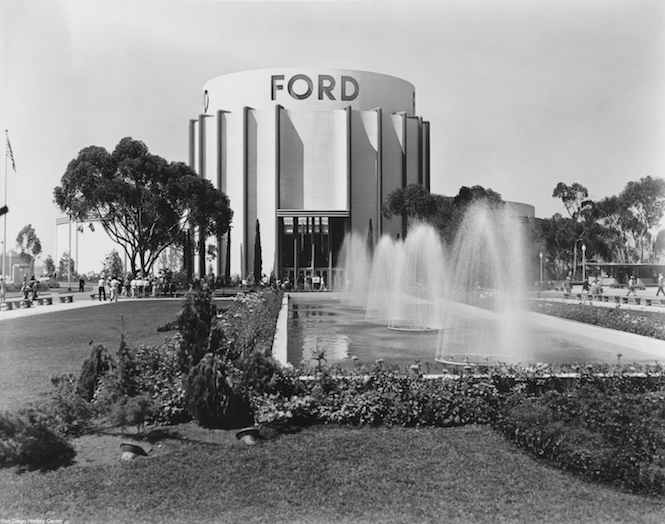The Museum will be closed January 12th - January 16th in preparation for our new Special Exhibition Ripley's Believe It or Not!. Museum reopens Saturday January 17th. New Exhibit opens January 31st!
The order to move items into the Ford Building came in May 1979. Even though restoration construction continued on the main floor, volunteers and staff began moving collections into the basement of the Museum's new permanent home.


Salvaged items and new donations are moved into the basement of the Ford Building.
The Ford Building was constructed in 1935 for the California Pacific International Exposition, and housed the Ford Motor Company’s industrial and automotive display, the largest exhibit at the exposition. After the Exposition closed in 1936, the Ford Building was closed to the general public for 44 years. During that time, it served many other purposes.

The magnificent Ford Building during the 1935 California Pacific International Exposition.
The 251st Coast Artillery used the building as a technical school and stored anti-aircraft guns, trucks, and searchlights there until they were drafted to Hawaii in 1940. The following year, the San Diego Vocational School set up an airplane construction school in the building to train men and women as aircraft workers during World War II. The Civil Air Patrol held night school there for several years, too, before moving out in 1946.

The classroom set up for the San Diego Vocational School to teach aircraft workers during WWII, located on the main floor of the Ford Building.

Students working on aircraft.
From 1949 to 1959, the building was used by the San Diego Vocational High School and Junior College as an aircraft mechanics school. After the building survived a recommendation for demolition in 1959, the City Parks and Recreation Department moved into the basement; the Starlight Opera occupied the main floor; and the rotunda was used by Artistas del Barrio for cultural activities.

The Ford Building was eventually used for storage by the City of San Diego before restoration began.

Storage in the rotunda area.

The building had been well-used and deteriorated through the years. In 1973, it was designated as a national historic structure, which put the renovation process in motion. By 1977, crews began the process of demolition and clean-up for the reconstruction. In January 1978, local artist, muralist, sculpture and teacher, Thomas Parker Emery, was commissioned by the City of San Diego to restore two murals painted in 1935-36 by Juan Larrinaga on the inner circular wall of the building: the 18-ft. high by 468-ft. long March of Transportation mural, and the 21-ft. high by 38.5-ft. long National Geographic Explorer II mural. Emery, with the help of three assistants, Gwen Pendergast, Michael Dunham, and Angelina Tang, started the renovation on February 5, 1979 and spent eight months cleaning, patching, and restoring over 10,000 square feet of wall space.

Restoration on the west side of the rotunda, viewed from the main entrance. The rotunda murals were painted by Juan Larrinaga in 1936, restored, and covered with protective panels. There were additional murals on the columns leading into the open aired courtyard. These murals were painted on canvas by Charles B. Falls and removed in 1936.

Restoration on the east side of the rotunda.

Restoration of the V-8 fountain and open aired courtyard.

Restoration of the Juan Larrinaga “March of Transportation” mural.
2001 Pan American Plaza, San Diego, CA
Phone: 619.234.8291
Información En Español
Contact Us
We would like to thank all our sponsors who help us make a difference. Click here to view all who help us.

The San Diego Air & Space Museum is a 501(c)(3) non-profit organization. Federal Tax ID Number 95-2253027.
